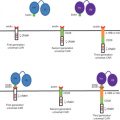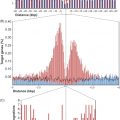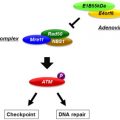Keywords
Gene therapy, clinical trial, FDA, somatic cells
Introduction
Once a clinical gene therapy target has been identified, it is a lengthy process between proof-of-concept studies and implementation of a clinical trial. Throughout the years, the U.S. Food and Drug Administration (FDA) has developed guidelines to accommodate this new and expanding field; however, gene therapy products are diverse, and often these guidelines alone are not sufficient to support clinical translation. Thus, investigators must often rely on the experiences of others. The intent of this chapter is to share those experiences gained during navigation of gene therapy products and protocols from the academic laboratory to the clinic. Three cancer gene therapy studies are used to illustrate issues encountered in vector construction, product manufacturing, and regulatory interactions.
The first example utilizes gene-modified autologous peripheral blood-derived CD34 + stem cells that are transduced ex vivo with a lentiviral vector encoding the P140K mutant of O 6 -methylguanine methyltransferase (MGMT), which confers resistance to temozolomide (see Chapter 30 ). The product is infused into patients with glioblastoma multiforme undergoing combination therapy with temozolomide (TMZ; Temodar) and O 6 -benzylguanine to protect against myelosuppression during TMZ dose escalation.
The second example describes manufacturing experiences with a lentiviral vector prepared at Lentigen Corporation and used for a T cell immunotherapy clinical trial.
The third example describes experience with an antisense plasmid used in patients with head and neck carcinoma. Head and neck squamous cell carcinomas (HNSCC) are highly dependent on epidermal growth factor (EGFR) for growth and survival. Although inhibition of EGFR in preclinical models results in tumor growth inhibition, limited antitumor efficacy has been reported in clinical trials with antibodies and small molecule inhibitors. Downmodulation of EGFR protein levels using the antisense approach in a phase I clinical trial resulted in a 29% response rate . In the study described here, the gene therapy agent was administered intratumorally in patients with HNSCC in a dose-escalation study. Further details, including vector design and toxicity studies, are described later.
FDA Interactions
Gene therapy products and most somatic cell products are regulated by the FDA Center for Biologics Evaluation and Research. General regulatory guidelines are outlined in the “Guidance for Human Somatic Cell Therapy and Gene Therapy” ; however, each gene therapy vector subclass, including retroviruses, adenoviruses, herpesviruses, and nonviral vectors, presents its own issues related to clinical translation and should be discussed with the agency on a case-by-case basis. Good communication will result in FDA requirements that are tailored to the specific product to be investigated. As for all biologics, for drugs and devices intended for evaluation in clinical trials, contact with the FDA from an early stage through removal of clinical hold is recommended, and interactions throughout the study are required. Generally, interactions with the FDA are viewed by investigators as collaborative and productive.
The following sections discuss points to consider when navigating the regulatory pathway during vector construction, manufacturing, and protocol development.
Formal Meetings
A useful mechanism for an investigator to get regulatory feedback during the product development stage is a type C meeting with the FDA . This type of meeting can be requested at any time point but is most advantageous early in the development phase after construct design and proof of concept but prior to preclinical studies that will be used for the Investigational New Drug (IND) submission.
Investigators submit “pre-read” materials to the FDA, including objectives of the meeting, an agenda, background information, and specific questions for the FDA. This should be viewed as a first evaluation of a possible clinical product, not a brainstorming session. The interaction is formal and should be treated accordingly because the outcome can impact the entire study program. The preparation of the meeting pre-read materials can take a significant amount of time; however, the materials are useful as a framework for the next step, the IND submission.
Suggested topics for an FDA meeting in the development stage include but are not limited to the following:
- 1.
Construct design: This is an opportunity to have the FDA review the construct design, its constitutive elements, and evaluate the source of each of the elements. The data should be presented in a clear and concise manner. A table summarizing each of the elements included in the construct, their source, and Gene Bank reference where applicable aids in the review of the constructs. The benefits of having the construct reviewed early include the identification of a potential need for a construct to be redesigned prior to preclinical evaluation.
- 2.
Review of data to date: Data should be compiled in a manner that allows preliminary evaluation of the risk/benefit of the gene transfer system. This should include detailed information that leads the investigator to believe that the therapy has strong potential of success. If the data are not presented in an organized manner, the FDA will not be able to answer effectively, resulting in an unproductive meeting.
- 3.
Preclinical study designs: A summary or protocol for each of the preclinical studies should be presented. This will allow the investigator to learn the types of questions the FDA will ask when reviewing the study designs. Gaining early insight into what the FDA expects to see enables the researcher to design robust studies and acquire the data necessary to satisfy the requirements of an IND submission.
- 4.
Assays: Each gene therapy product will have unique assays to evaluate the potency and identity of that product. In addition, there are routine assays that will test for safety and purity of each of the gene transfer systems. By presenting the assays in the first meeting with the FDA, the investigator can learn if the assays will be sufficient to satisfy the FDA. For proper evaluations, a brief description of the assay and, if not a United States Pharmacopia (USP) assay, inclusion of the limit of quantitation (LOQ) and limit of detection (LOD) for the assays is important. If the assays do not meet FDA expectations, the investigator then has sufficient time for further development of assays and acquisition of data prior to the pre-IND meeting.
Once a development path has been established, safety studies will follow. Questions related to these experiments can be addressed at a type B, pre-IND meeting. In general, safety studies can last between 3 and 9 months, but they may last much longer depending on the type of study. During this period, the investigator and team should concurrently evaluate manufacturers for clinical supplies and develop the clinical manufacturing processes. Although a pre-IND meeting is not mandatory, some investigators find it useful to get confirmation and resolve issues related to product manufacturing, product delivery, and clinical design prior to IND submission rather than expend effort and spend money on studies that may need to be redesigned.
Suggested topics for an FDA pre-IND meeting include the following:
- 1.
Preclinical studies: Efficacy and safety studies will, in most cases, be required for the IND submission, and they could be discussed here if desired. As mentioned previously, full data (not summaries) should be presented in an organized manner. These studies should use a manufacturing process and method of product administration comparable to that which is proposed clinically.
- 2.
Critical reagents: Critical reagents that will be used in the manufacture of the gene delivery system, in cell processing, or in patient care should be presented. A table for reagents used in each of the key manufacturing processes including material, vendor, source, and grade should be provided. If a research-grade material is proposed, details of how the material is prepared and tested should be provided.
During review of a T cell immunotherapy protocol, it was learned that two reagents used in the manufacture of clinical product were not satisfactory for clinical use. One reagent was near the expiration date, and the manufacturer no longer manufactured the reagent. It was determined that stability data were not sufficient to allow for extending the shelf life of this reagent. The second reagent did not have sufficient testing provided in its Certificate of Analysis to allow for use in the clinical trial. These deficiencies were learned in the pre-IND meeting, allowing the investigators the opportunity to find an alternative source for the first reagent and perform additional testing on the second. The result was an IND that had no manufacturing issues and was not placed on clinical hold.
- 3.
Manufacturing processes: If the manufacturing processes to be used for the clinical product have not been evaluated previously by the FDA, this could be discussed in the pre-IND meeting. This allows the manufacturer to modify the process if necessary rather than spend time and money in a nonproductive way.
- 4.
Clinical plan: The clinical plan should be included in the pre-IND submission not only for review of the study design but also because the clinical protocol will dictate critical parameters such as the quantity of clinical product and the determination of release criteria. For example, the FDA may require a rapid mycoplasma detection method for infusion of a fresh product that may need to be developed before a clinical trial can begin.
The lentiviral (LV)-P140K MGMT trial utilized a vector constructed specifically for this trial and that had not been used previously in humans. The type B pre-IND meeting was critical to obtain feedback in the early stages of vector and study design. Topics for FDA discussion included vector elements, characterization of the clinical vector, vector stability and storage, copy number, copy number expectations, and methods for replication-competent lentivirus testing. In addition, clinical study design, cell, and drug dosing were reviewed.
The EGFR antisense study followed a different regulatory path from that described previously because it was a phase II study with an existing IND that was granted for the gene therapy product used in the phase I trial. After discussions with the FDA, preclinical studies (described later) were performed with the EGFR antisense sequences in a modified plasmid backbone. Minimal plasmid modifications were made, and a detailed rationale for the changes in the plasmid backbone was provided. As a result, permission to move forward with the new formulation in the phase II trial was granted. However, it required close interactions and data generation in vitro to satisfy members of the FDA review team. Repetition of the previously performed and reported pharmacology/toxicology studies was not required.
Type V Drug Master File
A drug Master File is a submission to the FDA that may be used to provide confidential detailed information about facilities, processes, or articles used in the manufacturing, processing, packaging, and storing of human drugs and biological products . A Master File is highly recommended if multiple studies will be performed with either a manufacturing process or a single vector. During preparation of an IND, the investigator will learn whether the components to be used in the study have a Master File.
The lentiviral vector construct and manufacturing procedures were detailed in a Master File, easing the burden of the investigator during IND preparation. In lieu of obtaining all necessary information from the vector manufacturer for inclusion in the IND document, a simple cross-reference letter was provided. This benefitted the manufacturer because it kept proprietary information confidential, and it benefitted the investigator because it eased the burden of the Chemistry, Manufacturing, and Control section of the IND.
Preclinical Evaluations
Preclinical studies are performed to establish the rationale for conducting the planned clinical trial and to define the pharmacologic and toxicologic effects of the target gene product to be administered to a specific patient population . These studies provide data on in vivo function, efficacy, and dose. They also identify potential toxicities to monitor in patients receiving the therapy. Potential issues related to vector introduction are toxicity, immune and inflammatory responses, gene control issues, insertional mutagenesis, and potential of propagation of the viral vector.
The Pharmacology and Toxicology section of the IND is most important because these studies support the use of the product in humans. This section can be especially challenging for biologics and specifically gene therapy products due to the lack of specific guidelines for these products. In general, the product used should be manufactured comparably to the product used in the clinical trial and should have similar characteristics as the clinical product. The study should be planned prospectively, and the data should be of sufficient quality to support all conclusions. Safety studies should comply with good laboratory practice (GLP) standards as described in FDA regulation 21 CFR Part 58 . If compliance is not possible, as may be the case in some academic settings, a brief statement citing the reason for noncompliance, deviations, and potential impact of the deviations should be noted.








